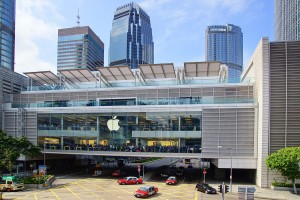Apple Inc. (NASDAQ:AAPL) appears to be on track to start using sapphire glass grown at its own facility in Arizona for the displays in iWatches, iPhones, and so on in the near future. Corning, the current maker of the Cupertino enterprise’s displays with its Gorilla Glass products, has attempted futilely to head off use of the alternative material in Apple’s mobile devices by pointing out its supposed drawbacks, including costs. More figures on the price of using sapphire with Apple’s new manufacturing facility improving efficiency are also becoming available.
The question arises, will Apple’s use of sapphire glass tend to increase or decrease technical innovation? Is their adoption of this substance likely to spur additional developments, or stifle other, perhaps ultimately more fruitful, technologies?

An additional fact to consider is that sapphire was on its last legs before Apple suddenly built its huge foundry in the deserts of Arizona. Reports suggest that the sapphire display market had a brief flash of popularity in 2010, which cause excess investment and an eventual price crash in 2012 and 2013. However, the material is making a vigorous comeback thanks to Apple and GT Advanced Technologies (NASDAQ: GTAT). Global production will soon hit unprecedented levels due to Apple’s bold move, and, to justify the expense to shareholders, good use will have to be made of all this capacity.
Furthermore, costs should be held down by the scale of Apple’s production. Each slab should cost around $6.40 to make raw, and costs around $17 by the time it has been shaped, cut, and polished into a smartphone-ready display cover. Though hardly trivial, this cost is still cheap enough to be used effectively in iPhone manufacture without greatly increasing manufacturing cost.
In conclusion, it seems that Apple’s (AAPL) rescue of sapphire glass from its nearly fatal slump will increase, rather than lessen, the diversity of materials technology. Corning will continue to produce Gorilla Glass, and may even be driven to trying new, unexpected products to make up for the slight revenue loss Apple’s switch to sapphire will inflict.
At the same time, Apple more or less singlehandedly rescued sapphire display technology from oblivion. Due to demand problems, the material appeared to be heading quickly to a dead end. Apple gave it a fresh breath of life, and another chance to see if this substance has anything to offer the world of technology.
New developments may emerge from the use of the alternative display material, and the world of science is always well served if several approaches are tried rather than just a single one. Furthermore, the sapphire display will serve Apple Inc. (AAPL) well in making its brand even more distinctive, and may soon be as iconic as simple interfaces and the highly esthetic designs of Jony Ive.




